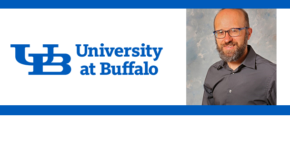 Just what is a ‘creative spark’ in the eyes of the law?
Just what is a ‘creative spark’ in the eyes of the law?
Mark Bartholomew, professor of law at the University of Buffalo School of Law, explains.
Mark Bartholomew is Professor of Law at the University at Buffalo School of Law. He writes and teaches in the areas of intellectual property and law and technology, with emphases on copyright, trademarks, advertising regulation, and online privacy. His latest book, Intellectual Property and the Brain, examines how neuroscientific discoveries may reshape the legal definitions of creativity, aesthetic judgment, and consumer confusion.
What Neuroscience Can Tell Us About the Law of Creativity
There is a paradox at the heart of American copyright law. On the one hand, the law stresses that copyright protection should only be awarded to works of art and authorship possessing a “creative spark.” On the other hand, fretting that any assessment of creativity must be in the eye of the beholder, courts refuse to investigate a work’s creativity. Instead they deem virtually any work that is not a carbon copy of another to be sufficiently creative to earn a copyright. Examples include copyrights for song lyrics merely repeating the phrase “uh-oh,” standardized test answer sheets, and photographs only taken by accident. This laissez-faire approach to creativity in the law matters because the more items protected by copyright, the fewer items new artists, fearful of being sued, can use to build their own creations.
Over the last decade, neuroscientists have set up a number of ingenious experiments that trace the neural activity of artists as they engage in creative tasks like improvising music or generating a humorous caption for a cartoon. These experiments show that many popular myths about the creative process are simply not true. Creative breakthroughs are almost never an accident and they can be objectively measured against what came before.
This means that copyright law has been going about it wrong. Judges should be reluctant to award copyrights to unintentional creations. New songs and artworks should be compared against the prior art to see if a would-be copyright owner has truly made a contribution.
Not everything about art and law can be boiled down to brain science. Still, neuroscience can offer much to improve our flawed system for regulating creative conduct.
Read More:
[Amazon] – Intellectual Property and the Brain: How Neuroscience Will Reshape Legal Protection for Creations of the Mind


Comments
2 responses to “Mark Bartholomew, University at Buffalo – What Neuroscience Can Tell Us About the Law of Creativity”